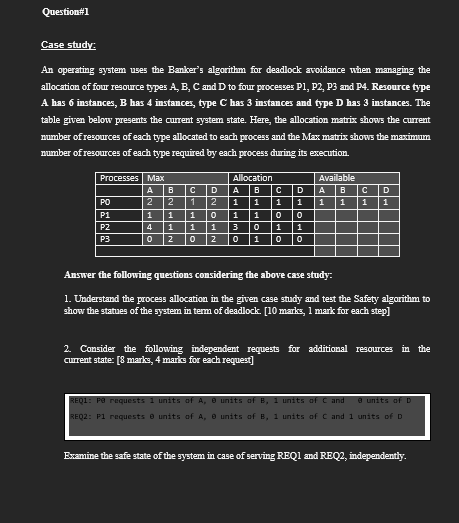Home /
Expert Answers /
Computer Science /
question-1-case-study-an-operating-system-uses-the-banker-39-s-algorithm-for-deadlock-avoidance-when-pa168
(Solved): Question#1 Case study: An operating system uses the Banker's algorithm for deadlock avoidance when ...
Question#1 Case study: An operating system uses the Banker's algorithm for deadlock avoidance when managing the allocation of four resource types A, B, C and D to four processes P1, P2, P3 and P4. Resource type A has 6 instances, B has 4 instances, type C has 3 instances and type D has 3 instances. The table given below presents the current system state. Here, the allocation matrix shows the current number of resources of each type allocated to each process and the Max matrix shows the maximum number of resources of each type required by each process during its execution. D ? 1 Available A B 1 1 ? 1 D 1 1 Processes Max A B PO 2 2 P1 1 1 PZ 4 1 P3 0 2 2 O 1 2 1 1 0 Allocation A B C 1 1 1 1 1 0 3 0 1 0 1 0 0 1 0 Answer the following questions considering the above case study: 1. Understand the process allocation in the given case study and test the Safety algorithm to show the statues of the system in term of deadlock. [10 marks, 1 mark for each step] 2. Consider the following independent requests for additional resources in the current state [8 marks, 4 marks for each request] REQ1: P requests 1 units of A, B units of B, 1 units of C and e units of D REQ2: P1 requests e units of A, B units of B, 1 units of C and 1 units of D Examine the safe state of the system in case of serving REQ1 and REQ2, independently.
